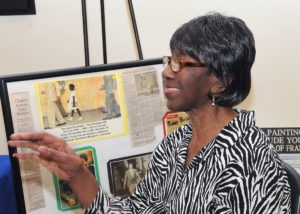Lucille Bridges: Hero of School Desegregation

Lucille Commadore was born in Tylertown, Miss., on Aug. 12, 1934. Her parents, Curtis and Amy Commadore, were sharecroppers, and her mother worked as a housekeeper. Lucille stopped attending school after the eighth grade so she could help them in the fields.
In 1953, Lucille married Abon Bridges, a mechanic. She gave birth to Ruby in Tylertown, Mississippi, in 1954 — the same year as the landmark Brown vs. the Board of Education of Topeka, Kansas decision that ended racial segregation in schools. In 1956, the family relocated from Mississippi to New Orleans to give their children a chance at a better education.
Ruby’s father, Abon, was initially reluctant to send his daughter to the all-white William Frantz Elementary School as a first-grader in 1960 at the request of the NAACP, but his wife insisted. According to the National Women’s History Museum, Lucille wanted her daughter to have the education she never had. She walked her daughter to school every day with the U.S. Marshalls past chanting and taunting white protesters. Her daughter went on to become an icon of the Civil Rights Movement, memorialized in Norman Rockwell’s famous painting, The Problem We All Live With, which depicts a tiny Ruby in a white dress carrying her notebooks and a ruler surrounded by much taller U.S. Marshals.
Lucille Bridges, died on November 10, 2020 at the age of 86. Ruby Bridges credited her parents as the forces behind her history-making achievement.
Johnessa Smith, AWS, CSM, CSPO, PM is the Program Administrator for the Georgia Commission on Women.